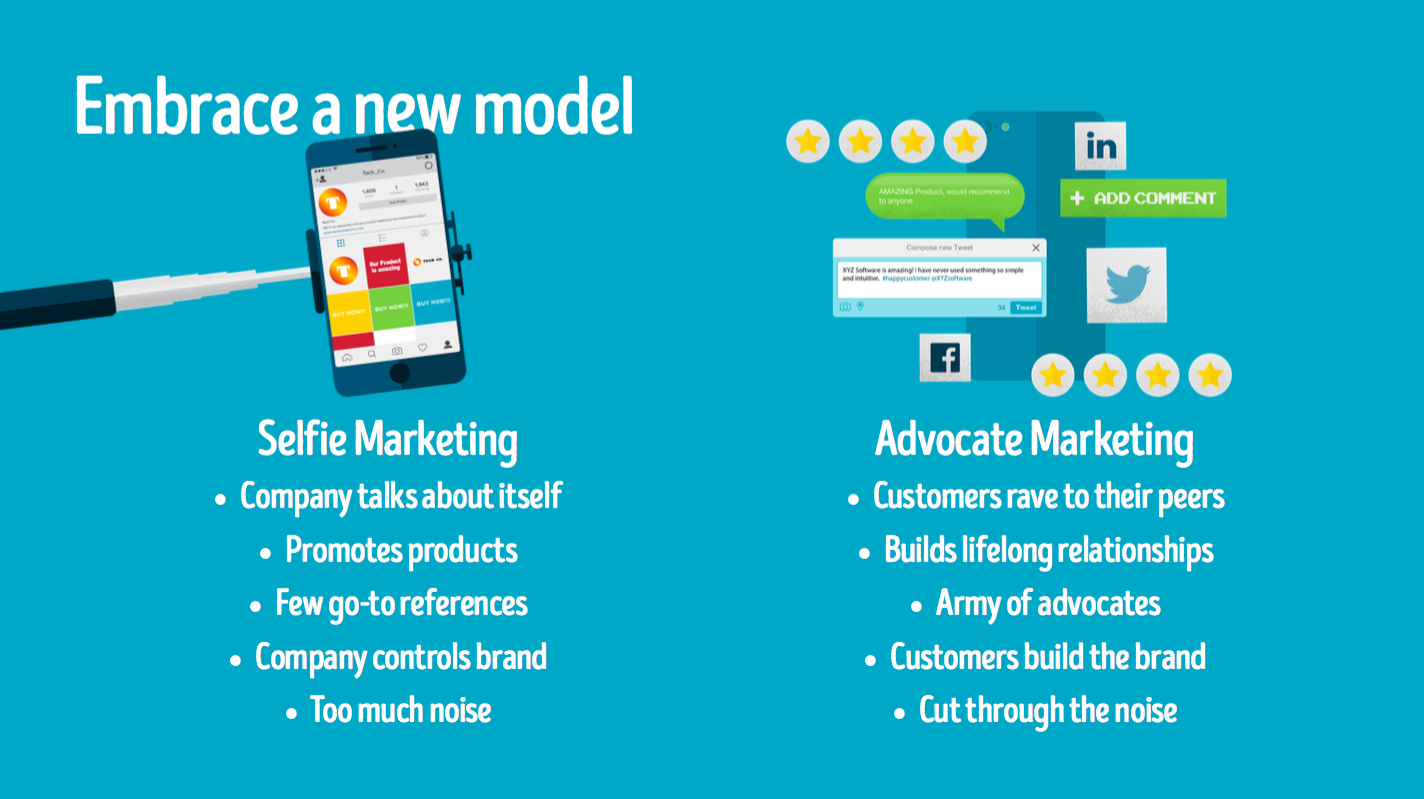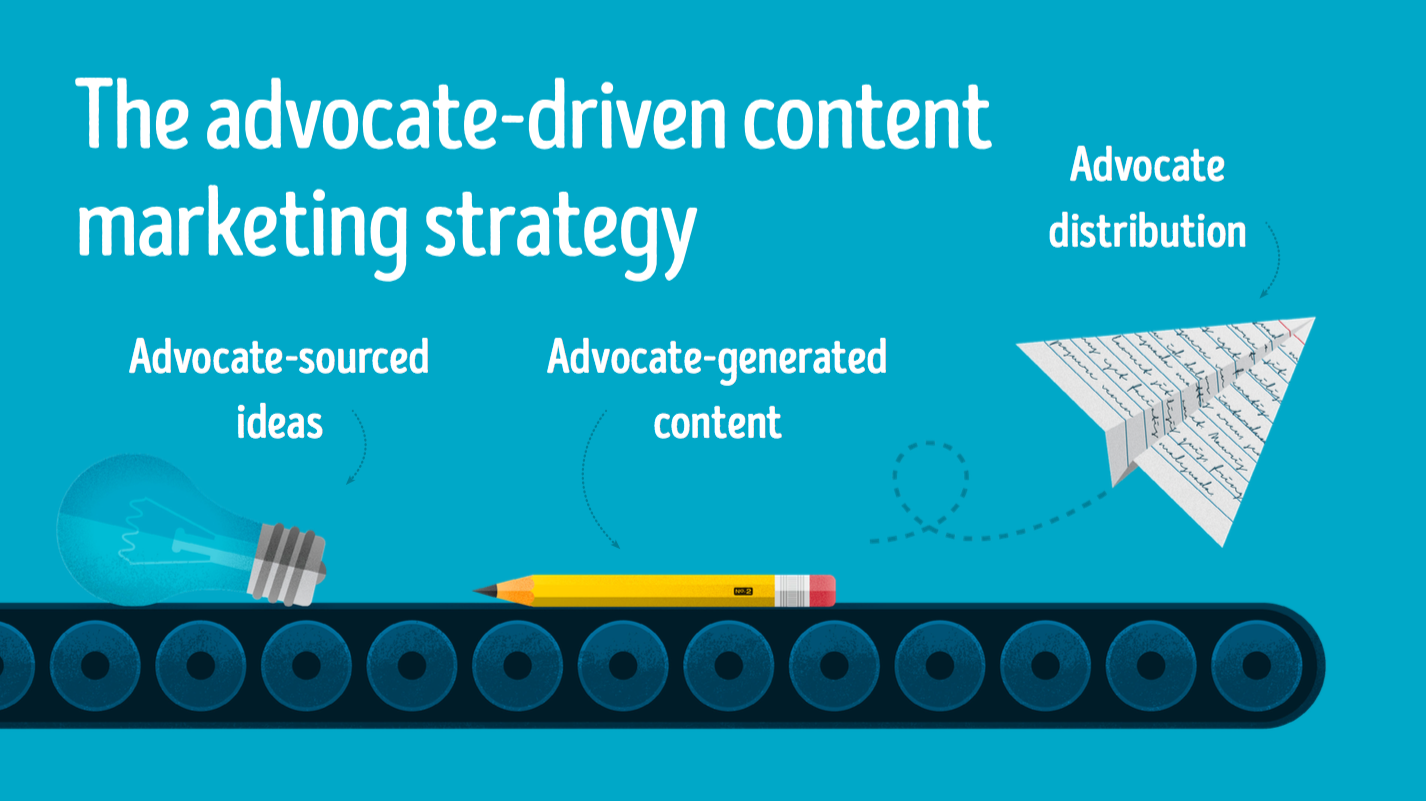B2B content marketing as we know it is broken.
Only 30% of B2B marketers say their organizations are effective at content marketing, according to the 2016 B2B Content Marketing Benchmark Report.
There are two main reasons for this:
- Most of your customers are suffering from what Mark Schaefer (a globally-recognized marketing consultant and a speaker in our upcoming Content Marketing Mentors webinar series) calls “content shock”—meaning they are incapable of consuming the sheer volume of content being produced.
- When a piece of your content does manage to get your audience’s attention, most of them (91%) don’t trust it. “Too many vendors are failing buyers with overly promotional and overly technical content,” says Donovan Neale-May, executive director of the CMO Council.
Connecting with your bored, skeptical and overwhelmed readers isn’t going to happen by creating more of the same. It isn’t through tweaking your headlines, finding more provocative images, or publishing on a new channel either.
Instead, marketers need to change the messenger. Making this simple shift in your thinking will revolutionize your content marketing strategy.
Rebooting your content strategy
Remember communications guru Marshall McLuhan’s famous 1967 theory “the medium is the message”? Fifty years ago, he wrote and lectured about how the medium through which a message is disseminated (e.g., radio, television, print, etc.) impacts the message itself. A lot has changed since then. Today, the messenger is the message.
According to a Demand Gen Report survey, 97% of B2B buyers say that user-generated content (UGC), like peer reviews, is more credible than other types of content. And B2B buyers are scouring social networks, online reviews and third-party sources (just like they do in their lives as consumers) for content that will help them make sound purchasing decisions.
That means the most powerful marketing tool you have isn’t something you can create on your own; it needs to come from an independent messenger. (And if it comes from an independent channel you don’t own, even better.)
Your best messengers are your customer advocates. Advocates are your biggest fans who are predisposed to talking about your brand. They’re the people who can validate your messaging and deliver it successfully to your target buyers—who just happen to be their peers.
You may be thinking: “Meh. I’m already creating eye-catching case studies and white papers that include well-crafted customer success stories.” But that’s not enough to move the needle.
Empowering your advocates and integrating them into content creation process is valuable for two important reasons:
- Harnessing their personal, authentic stories and perspectives will ensure your messages resonate with and are trusted by buyers
- Advocates make the ideation, creation and distribution stage of content marketing easier, faster and less expensive for your brand
By empowering customers to become your messengers, you’ll be able to move away from the selfish content marketing tactics you’re used to, towards something more meaningful:
B2C brands are already using consumer-generated content to provide social proof all of the time. For example, Apple recently ran a campaign for the iPhone 6 camera that showcased beautiful Instagram photos created by 77 iPhone users around the globe. And the Starbucks white cup campaign encouraged customers to decorate their cups and share their photos on social media, which influenced 3,000 contest entries in 3 weeks (and a lot of free social promotion for Starbucks).
B2B success with advocate generated content
Some B2B organizations are already turning advocates into their messengers. They do this by empowering their advocates at every stage of the content creation process.
This makes advocates feel invested. And when they’re invested, they’re more likely to lend their voices to your stories. Here’s what that looks like for several B2B brands with formal advocate marketing programs:
1. Develop ideas.

2. Create content.

3. Distribute content.

How to get started with advocate-generated content
To start incorporating advocates into your content strategy, follow these first steps:
- Stop sending out your own content
- Start recruiting your army of messengers (i.e. your advocates)—the customers who love your product so much that they’re willing to share their positive experiences with peers.
- Inspire and empower messengers to amplify the volume and reach of their collective voices by creating and sharing your brand stories. It starts by building long-term relationships with messengers who continually rave about you to their peers.
- Recognize your messengers for their efforts in front of their peers and through professional development opportunities.













































